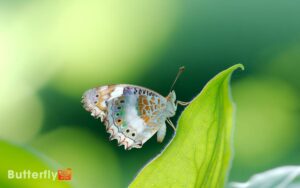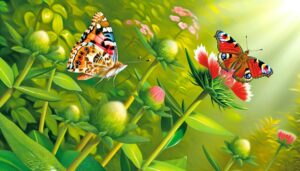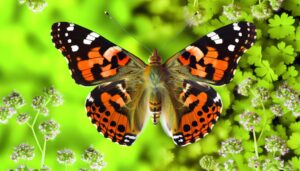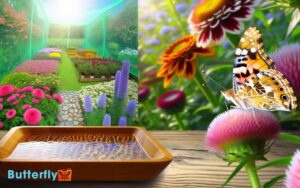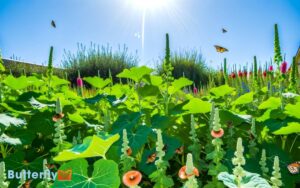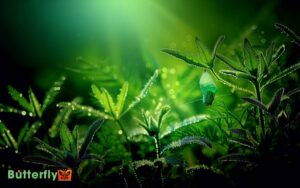Painted Lady Butterfly Habitat on Map: Discover Their Range!
The Painted Lady butterfly (Vanessa cardui) boasts a near-global distribution, inhabiting every continent except Antarctica.
In North America, they range from Alaska to the southern US, thriving in meadows with abundant floral diversity.
Europe sees them from the Mediterranean to Scandinavia, favoring grasslands rich in thistles, nettles, and mallows.
Asia’s varied landscapes, including temperate forests and grasslands, support their complex life cycles.
Remarkably, they’ve adapted to North African deserts, tolerating extreme temperatures by feeding on drought-resistant plants like mallow and thistle.
This extraordinary adaptability and their migratory patterns allow them to traverse diverse habitats, revealing more intricate ecological details.
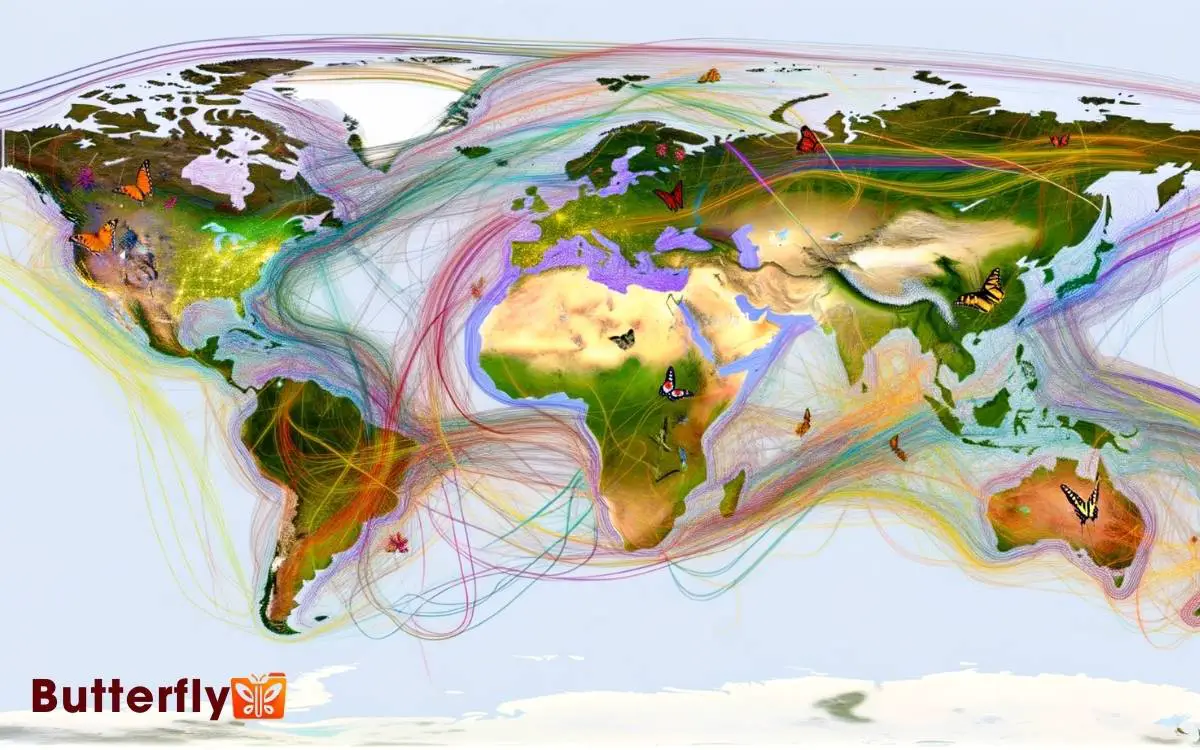
Key Takeaways
Global Distribution
Where can one find the Painted Lady butterfly?
This versatile butterfly inhabits a global range, residing on every continent except Antarctica. In North America, populations span from Alaska to the southern United States.
Across Europe, they’re commonly observed from the Mediterranean to Scandinavia. Asia hosts these butterflies as far east as Japan.
The species thrives in various climates, from temperate zones to arid regions, adapting to diverse environmental conditions.
Their migratory nature further expands their distribution. During migration, they can cover thousands of miles, influenced by wind patterns and availability of host plants.
The Painted Lady’s adaptability to different habitats and climates broadens its widespread presence, making it one of the most extensively distributed butterflies on the planet.
North African Deserts
Despite the harsh conditions of the North African deserts, the Painted Lady butterfly has adapted remarkably well to this arid environment. Its ability to tolerate extreme temperatures and limited water sources is remarkable.
The larvae feed on drought-resistant plants such as mallow and thistle, utilizing their deep root systems for moisture. Adults exhibit behavioral adaptations, including seeking shade during peak heat and maximizing flight efficiency to locate scarce floral resources.
Their migratory patterns also play an important role, as they traverse vast desert expanses to reach more hospitable areas. These adaptations not only secure their survival but also highlight their ecological resilience in one of the planet’s most unforgiving habitats.
European Grasslands
The Painted Lady butterfly thrives in European grasslands by exploiting a diverse array of flora, which provides ample nectar and suitable host plants for its larvae.
These butterflies benefit from the rich biodiversity found in temperate grasslands, which support their life cycle requirements efficiently.
Key plant species include:
- Thistles (Cirsium spp.) – Primary nectar source and host plant for larvae.
- Nettles (Urtica spp.) – Another crucial host plant providing essential nutrients for caterpillar development.
- Mallows (Malva spp.) – Offers both nectar and foliage for larval feeding.
European grasslands present an ideal environment due to varied microhabitats, consistent sunlight, and mild weather conditions. The intricate plant-pollinator relationships ensure the continued presence and propagation of the Painted Lady across these vast regions.
North American Meadows
North American meadows, characterized by their rich floral diversity and open sunny spaces, provide an ideal habitat for Painted Lady butterflies, supporting both their nectar requirements and larval host plants.
These meadows feature a variety of flowering plants such as asters, thistles, and milkweeds, offering abundant nectar sources vital for adult butterflies.
The vegetation structure also includes host plants like mallow and hollyhock, essential for larval development. The open spaces facilitate their distinctive migratory patterns, allowing for expansive flight paths.
Ideal sunlight exposure in these meadows aids in thermoregulation, necessary for their metabolic processes.
Additionally, meadows’ seasonal blooming cycles promote a continuous supply of resources throughout their life stages, fostering a stable environment for Painted Lady populations.
Asian Landscapes
Asian landscapes, with their varied ecosystems ranging from dense forests to arid steppes, provide diverse habitats that support Painted Lady butterflies’ complex life cycles and migratory behaviors.
These butterflies thrive in various Asian regions due to the availability of essential resources and suitable climatic conditions.
Key habitats include:
- Temperate Forests: Rich in nectaring plants and larval host plants, these forests support both adult and larval stages.
- Grasslands and Steppes: Open areas with abundant flowering plants offer ideal nectaring sites for adult butterflies.
- Mountainous Regions: Elevations provide cooler climates and diverse flora, critical for breeding and feeding.
Understanding these habitats highlights the adaptability of Painted Lady butterflies and underscores the importance of conserving these ecosystems to maintain their populations.
Migratory Patterns
Painted Lady butterflies exhibit remarkably complex migratory patterns, traveling thousands of miles across continents in search of ideal breeding and feeding grounds.
These butterflies undertake multi-generational migrations, with each generation advancing the journey northward or southward.
Key factors influencing their migration include temperature, wind patterns, and availability of nectar sources.
| Region | Start of Migration | End of Migration |
|---|---|---|
| North America | February | October |
| Europe | March | November |
| Asia | April | December |
In North America, they migrate from Mexico to Canada, while in Europe, they travel from North Africa to Scandinavia. Asia sees them moving from the Indian subcontinent to Central Asia.
These migrations are essential for maintaining genetic diversity and population stability across their vast range.
Conclusion
The painted lady butterfly boasts an astonishing global distribution. It thrives in diverse habitats, from the scorching North African deserts to the lush European grasslands, the vibrant North American meadows, and the varied Asian landscapes. This remarkable species undertakes impressive long-distance migrations, traveling thousands of miles in search of suitable breeding and feeding grounds. Scientists have closely studied painted lady butterfly activities, such as their seasonal movements and feeding patterns, to understand their adaptability. Their ability to flourish in such varied conditions highlights their resilience and ecological significance.
Despite facing various challenges, this delicate creature manages to survive against all odds.
But here’s the twist – what secrets lie in its migratory patterns? As it flutters across continents, one must wonder how the painted lady butterfly endures such epic journeys. The mystery beckons further exploration.

